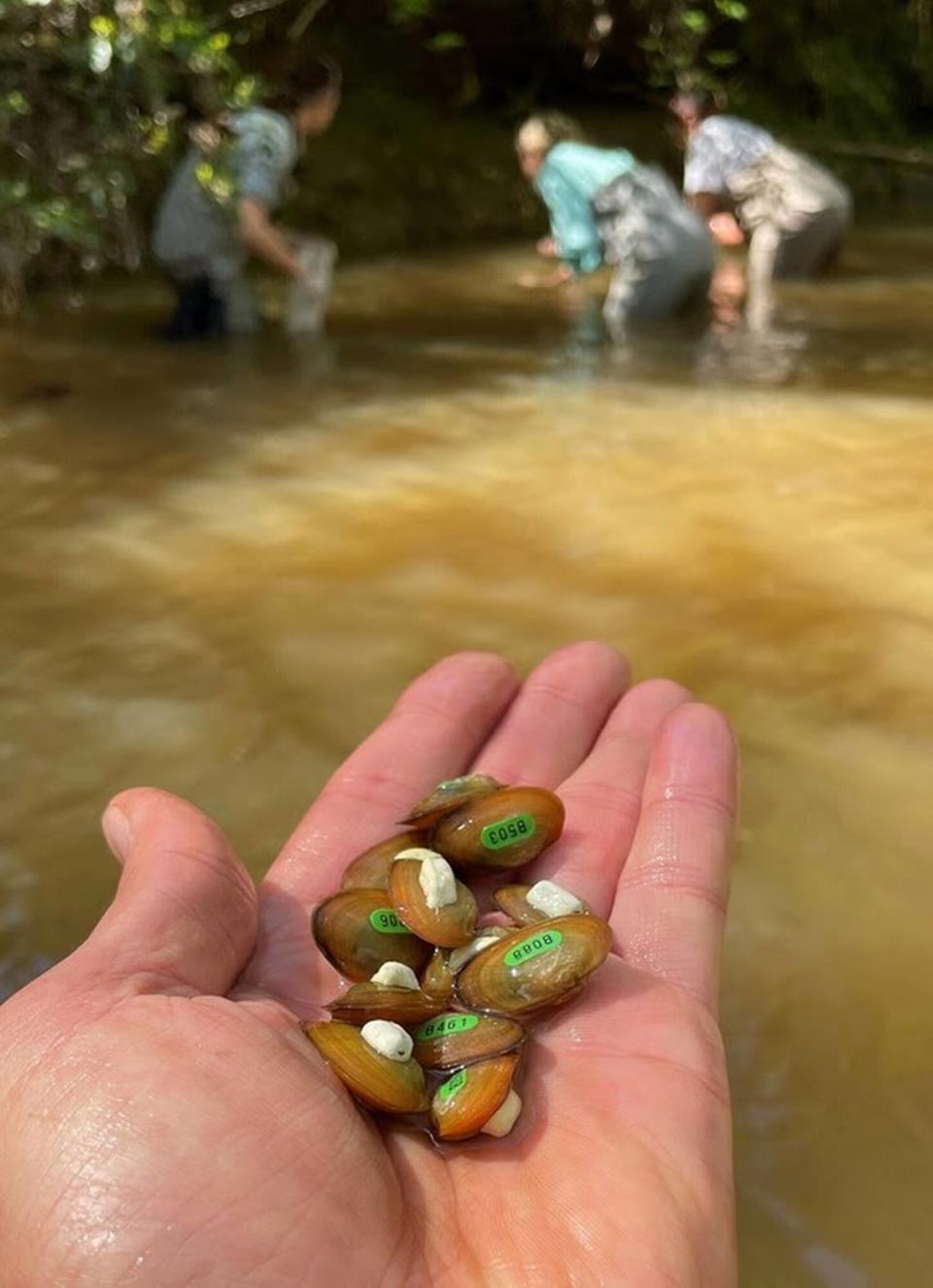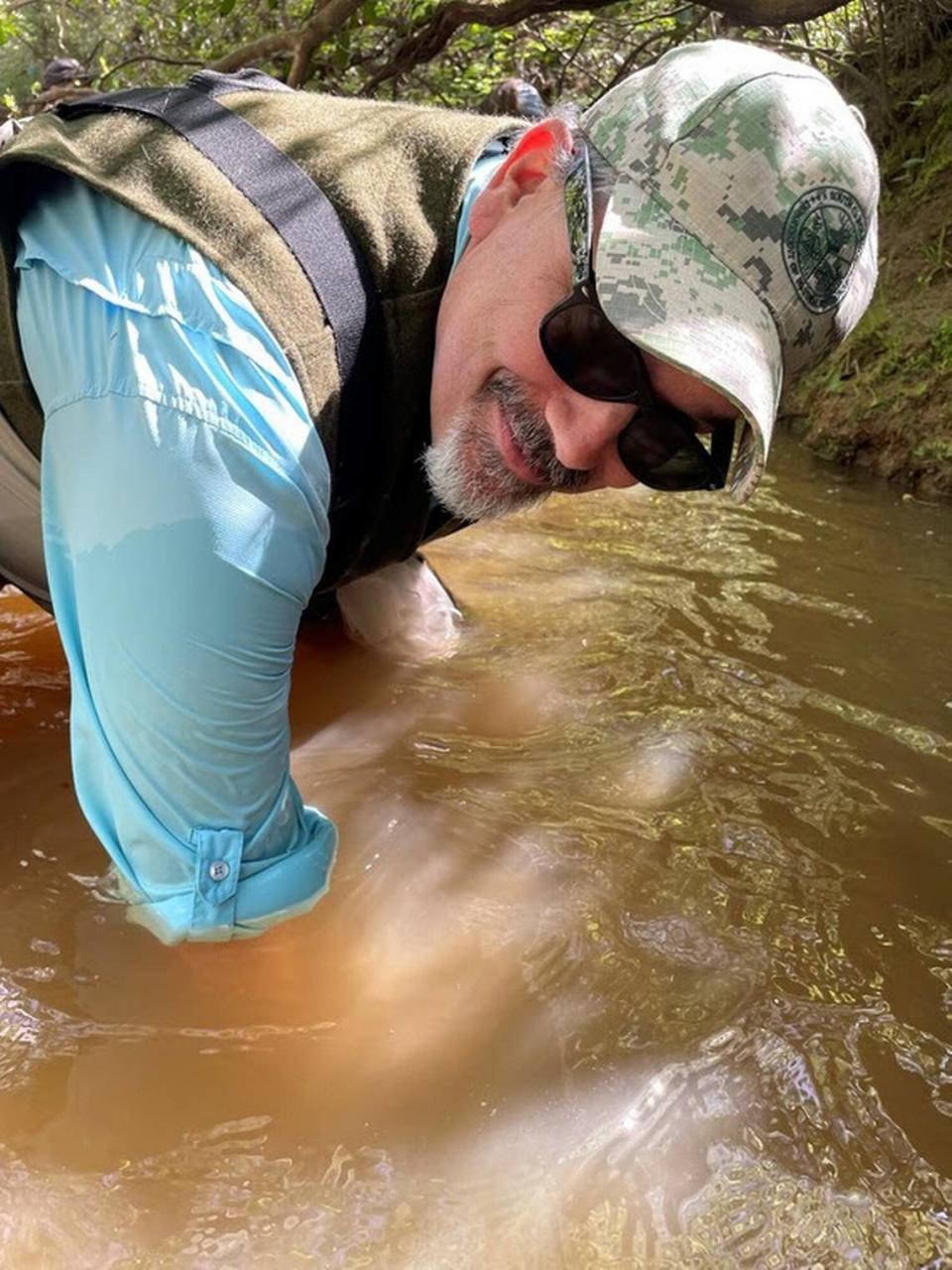Put your mussel into it: Why SC added more Carolina Heelsplitters into Lancaster creek
They sound painful, but bivalves known as Carolina Heelsplitters in Lancaster County streams could put developers in a pinch unless the mussels are able to grow. Both the state and county have new plans to make that happen.
Heelsplitters are a federally designated endangered species that builders have to help protect, even as Lancaster County officials look toward new rules on how builders pay for it. Meanwhile, more mussels are coming to help.
The South Carolina Department of Natural Resources just released 500 Heelsplitters into Flat Creek, growing mussel populations in one of the few places in the world they occur.
The endangered mussels were relocated to Katawba Valley Land Trust property near Flat Creek Heritage Preserve and Forty Acre Rock, after growing at a U.S. Fish and Wildlife Service hatchery in Orangeburg.
Heelsplitters used to be found in large rivers or streams, but they need clear freshwater to maintain their population, according to the state Natural Resources Department. Populations have dwindled with development as sedimentation, stormwater runoff, pollution and similar threats became more prevalent in the region.
“Our state is growing rapidly, and we need to work to ensure the things that make South Carolina so special — like the Carolina Heelsplitter — are here for future generations to enjoy,” state Natural Resources director Robert Boyles said in a news release after his agency added Heelsplitters to Flat Creek.
The mussels aren’t a new concern in Lancaster County, especially for developers and county planners who play roles in protecting Heelsplitters.

Lancaster County plans for Heelsplitter
Named for its sharp edges and what it might do if someone stepped on one, the Carolina Heelsplitter is native only to the Carolinas. The species was declared endangered in 1993.
By 2002 the federal Fish and Wildlife agency listed only two populations in North Carolina and four in South Carolina. Just a few years later there were 11 known populations, with fewer than 200 Heelsplitters.
Almost half of them were in the Flat Creek area. A new population was discovered in Six Mile Creek in 2006.
Development in the high-growth Indian Land area was impacted, often delayed by approvals from federal Fish and Wildlife to build near the habitat. The county set up a mitigation rule in 2008 to help, using a conservation bank.
Conservation banks are common with large road construction projects, or other jobs that cross wetlands. A developer impacting a site can buy credits that are used to fund environmental improvements elsewhere. Costs vary depending on factors like how much land is disturbed, buffer size and where the project happens.
The 2008 county rule, modified in 2011, required builders in the Six Mile Creek watershed to buy credits. Some of the money would go to environmental projects in South Carolina, and some would go outside the state. Some went to land purchase along Six Mile Creek for Heelsplitter habitat.
Last June the county heard from a developer that the county was close to running out of available credits, and within a week there were none left.
On Wednesday, county Development Services director Allison Hardin told Lancaster County Council that a new setup is underway.
The county would establish something like a special service district that would bypass the outside conservation bank and keep developer payments local. It would be the first program of its kind in the state, she said.
“We’re going to create a project list,” Hardin said. “We’re going to use the money to better the environment here in Lancaster County.”
Projects still would need federal Fish and Wildlife approval. The program could improve area stream and water quality while conserving more property in the Flat Creek area.
Lancaster County development has been highest in the panhandle for decades now. Part of the issue last summer with running out of credits came from the high rate of development buying them out two years sooner than expected.
“There’s no project to take over for it,” Hardin said, “and the alternative of dropping the project puts us in a very dire situation.”

New boost to Heelsplitter populations
The county will form those plans as the state continues to grow more Heelsplitters.
Most of the 500 mussels just released into Flat Creek are less than an inch long, and they each have a pit tag with a numbered microchip for later identification. Typically a Heelsplitter might move 12 feet a year, according to the state Natural Resource Department.
The Heelsplitters are from a cohort of about 2,500 mussels grown in a state hatchery since the start of last year. Heelsplitters can live up to 20 years, but rely on host fish during their life cycle.
Adding mussels at sites like Flat Creek will help them reproduce on their own as the habitat stabilizes, said state Mussel Program coordinator Morgan Kern.
Mussels are natural water filters that also help improve water quality for other animals.
Federal Fish and Wildlife lists two areas where Heelsplitters live now. The Charlotte metro area is about twice the size as one between Greenwood and Aiken, in western South Carolina.
The Charlotte-area zone runs roughly from York and Chester on the west side across Rock Hill, Fort Mill, Indian Land and Lancaster. Areas south of Pageland are included. To the east, it runs south of Charlotte through areas like Waxhaw and Monroe, North Carolina. It stops a little south of Albemarle.

